UPDATE (09.11.2022): Post substantially revised to reflect v1.0.0 v0.8.0 of the enhanced NYC subway.
Welcome back to my ongoing NYTIP series! In my last post, I discussed the Eastern Parkway trunk line in Brooklyn served by the 2, 3, 4, and 5 lines. In this post, I will discuss the 2, 3, 4, and 5 lines in Upper Manhattan and The Bronx, and explain why a redesign is extremely challenging.
If you’ve read the preceding posts in this series, you’ve seen that the key to enhancing the NYC Subway (point one in my three-point plan) is eliminating merging conflicts between subway lines – mostly through de-interlining. In some cases, de-interlining is trivial since it does not require capital investment; in other cases, it only works with capital investment.
With the IRT lines in The Bronx, it’s a bit of both. Let’s explore.
Note: Click any image to enlarge.
[Fig. 1] Snippet of the NYC Subway Map showing current service in The Bronx and Harlem.
The circled areas in Figure 1 above are the “trouble spots” of the Bronx IRT system. The key to a successful redesign of Bronx IRT services is addressing these trouble spots. Let’s take a closer look.
[Fig. 2] Track map of the 2, 3, 4, and 5 lines showing conflicts in the South Bronx and Harlem. Source: vanshnookenraggen.
The first trouble spot is the 142nd Street junction on the 2 and 3 lines, a flat junction that constrains capacity on both lines. The second trouble spot is the 149th Street junction where the 2 and 5 trains meet; as Figure 2 shows, 5 trains negotiate a wicked S-curve between 138th Street and 149th Street. The sharpness of the curve restricts the 5 train’s speed, inducing delays.
[Fig. 3] Snippet of vanshnookenraggen’s track map showing conflicts near the East 180th Street station.
The last trouble spot is East 180th Street. During peak hours, 5 express trains from the Dyre Avenue branch entering or leaving the center track at East 180th Street must cross the local tracks at grade. The branched 5 service between Nereid Avenue and Dyre Avenue also contributes to delays and, for Dyre Avenue branch riders, infrequent service. While recent improvements allow some trains to use modified yard leads to avoid choke points, merging issues remain.
There are several ways to resolve these issues.
Option 1: Full de-interlining using existing tracks
[Fig. 4] Overview of Option 1. Created using Brand New Subway.
Option 1 fully de-interlines the Bronx IRT. Under Option 1, the 3 replaces the 5 to Eastchester – Dyre Avenue and runs local in The Bronx. The 2 runs peak-directional express service between East 180th Street and The Hub – 149th Street; under Option 1, this peak-directional express service would operate on weekdays and weekends to encourage ridership. This service pattern eliminates the merging conflicts at East 180th Street.
Meanwhile, the 5 would run via Jerome Avenue. Since 5 trains would no longer use the sharp curve north of 138th Street, this would significantly reduce delays throughout the 2, 3, 4, and 5 lines. Multiple service patterns are possible. The 5 could terminate at Burnside Avenue or Bedford Park Boulevard – Lehman College using existing switches; if both 4 and 5 trains run local on Jerome Avenue, then no capital investment is required on the Jerome Avenue El. One potential difficulty, given that both 4 and 5 trains run frequently, is delays caused by trains crossing in front of each other. Due to switch locations, terminating 5 trains must discharge their passengers on the same track as 4 trains regardless of where they turn on Jerome Avenue. This issue also precludes peak-directional 4 express service on Jerome Avenue. A capital solution exists to address this issue.
Potential capital investment: reconfigure Bedford Park Boulevard station to simplify terminal operations.
[Fig. 5] Overview of the Bedford Park Boulevard improvement.
This optional improvement contemplates island platforms at Bedford Park Boulevard station. The new platforms would be built slightly south of the current platforms to allow for new switches. This conversion takes advantage of the space on the left side of the ROW near Concourse Yard. Consequently, the northbound local track retains its existing alignment.
[Fig. 6] Detailed look at the Bedford Park Boulevard improvement.
This investment includes a new switch north of Kingsbridge Road station, which allows northbound trains on the center track to access Jerome Yard without wrong-railing. It also includes provisions for exits to a decked-over Concourse Yard, replacing gas stations with pedestrian plazas or other sustainable uses, and grade separation of the Jerome Yard leads – a feat accomplished by elevating the southbound local and center tracks. This requires grades in excess of the 3% standard due to space constraints – about 3.7% (1 in 27) from the Bedford Park Boulevard switches to the apex (about 20 feet above the existing ROW), and 3.33% (1 in 30) from the apex back to the ROW, just south of an existing switch. However, the subway regularly traverses steeper grades, so this should be feasible.
In this scenario, 4 trains run to Woodlawn and 5 trains run to Bedford Park Boulevard. The 5 uses the Jerome Yard leads to change directions, ensuring no conflicts with the 4. This allows two possible operating patterns – doubled local service at all Jerome Avenue stations up to Bedford Park Boulevard, or reinstating peak-directional 4 express service. In a previous MTA pilot program, select 4 trains ran express from Bedford Park Boulevard to 125th Street with intermediate stops at Burnside Avenue and 149th Street – Grand Concourse. There were two key issues with the pilot, however. The first issue was less service at local stops – a problem that the 5 via Jerome Avenue resolves. The other issue was express trains skipping busy stations like Fordham Road and 161st Street – Yankee Stadium – the latter being The Bronx’s busiest.
In a previous version of this post, I proposed optional express stop conversions at both Fordham Road and 161st Street – Yankee Stadium stations. However, to avoid excessive crowding conditions at 161st Street, which is a local stop on the Concourse line, Option 1 would only contemplate an express stop conversion at Fordham Road – and only if the 4 operates a peak-directional express service.
As is clear, Option 1 has many benefits. However, it suffers from three major issues. The first issue is that it leaves the 6 train as the only direct route to Manhattan’s east side from anywhere in the South or East Bronx. Under Option 1, 2/3 riders would have to transfer at 149th Street – Grand Concourse to the 4/5. As the 149th Street – Grand Concourse station complex only has a few narrow connecting passages between platforms, it would need a major rebuild to handle large volumes of transferees. The second is conflicts between 4 and 5 trains on Jerome Avenue, which also require capital investments to resolve as noted above. The third is a massive service cut to Harlem. If the 2 and 3 both serve The Bronx, there is no longer any regular service to the 145th Street or Harlem – 148th Street stations on the current 3 line; some peak-hour 3 trains would continue to serve these stations since the Lenox Yard is located near 148th Street.
In a previous version of this post, I considered a version of Option 1 with an infill station at 145th Street station just past the 142nd Street junction on the 2 line. As the line in this area is on a 3% gradient, I have deprecated that option and it is no longer under consideration for NYTIP.
The Harlem Shuttle
vanshnookenraggen proposed a Harlem shuttle between the 148th Street and 135th Street stations, which allows full de-interlining without an infill station or station closures:
It’s an interesting concept. One possible drawback is that transfers to or from the Harlem shuttle require a crossover or crossunder. I think the Harlem shuttle would be a better sell with cross-platform transfers, which requires converting 135th Street station to island platforms. This conversion isn’t simple, however – the existing subway is immediately below street level, and it’s also offset from center on the west side of Malcolm X Boulevard. The silver lining is that both the boulevard and the sidewalks are wide, which could allow such a conversion without property takings.
Potential capital investment: convert the 142nd Street junction to a flying junction.
[Fig. 7] Conceptual grade separation at the 142nd Street junction.
This grade separation removes a key bottleneck on the 2 and 3 lines, and sets the table for a Harlem shuttle with island platforms at 135th Street. The figure below illustrates this concept.
[Fig. 8] Modified Harlem shuttle concept.
Note, however, that this plan would likely be more costly than vanshnookenraggen’s plan.
Taken together, is Option 1 the best option for The Bronx and Harlem at present? Let’s consider other alternatives.
Partial De-Interlining Options
Option 2: Swap the 2 and 5 lines north of East 180th Street station
[Fig. 9] Overview of Option 2.
[Fig. 10] Option 2 track map showing eliminated conflicts between express and local trains.
Option 2 prescribes a simple swap of the 2 and 5 lines north of East 180th Street. The White Plains Road branch is about 4.5 miles long with 10 stations, while the Dyre Avenue branch is about 4 miles long with 5 stations. Under NYTIP, express services should serve the longer, higher-ridership branches to the fullest extent possible; as such, Option 2 sends the 5 express to Wakefield – 241st Street and the 2 local to Eastchester – Dyre Avenue. With this change, peak-directional 5 express trains no longer cross the local tracks to or from East 180th Street.
Under Option 2, all 2 trains serve the Dyre Avenue branch and all 5 trains serve the White Plains Road branch to allow frequent service on each branch. This does not preclude put-ins from Nereid Avenue, Gun Hill Road, or East 180th Street – if necessary – to maintain regularity. This option could be paired with the grade separation shown in Figure 7 so that 2 and 5 trains in The Bronx run at the same frequency – ideally 30 TPH combined.
Option 3: 2/5 express/local swap
[Fig. 11] Overview of Option 3.
[Fig. 12] Option 3 track map showing eliminated conflicts between express and local trains.
In Option 3, 2 trains run peak-directional express service between East 180th Street and The Hub – 149th Street, while 5 trains run local. This would also eliminate the merging conflict between local and express trains north of East 180th Street. 2 and 5 service north of East 180th Street would be unchanged other than service increases. As with Option 2, there would be no “branching” – all 2 trains run to Wakefield – 241st Street and all 5 trains run to Eastchester – Dyre Avenue.
Summary
Much like Queens Boulevard, the Bronx IRT system has a myriad of issues that are challenging to address. While full de-interlining eliminates many issues, it also introduces new issues. Since there is no direct alternative to 5 service in the South or East Bronx at present, and since capital investments are required to solve that problem, full de-interlining should be deferred. In addition, service changes should be amenable to future expansion. Therefore, version 0.8.0 of the enhanced NYC subway would incorporate Option 3. Option 3 addresses conflicts near East 180th Street station without drastically altering service patterns. The peak-directional 2 express service would operate throughout the day on both weekdays and weekends to encourage ridership; service at local stations would also increase. In the future, regional rail improvements (i.e. improved Metro-North service with infill stations and lower fares) and a Bronx branch of the Second Avenue Subway could pave the way for full de-interlining of the Bronx IRT with minimal inconvenience.
The proposed changes outlined above would affect 2 and 5 service. I previously addressed proposed frequencies for these services – along with those of the 3 and 4 lines – in my Eastern Parkway post.

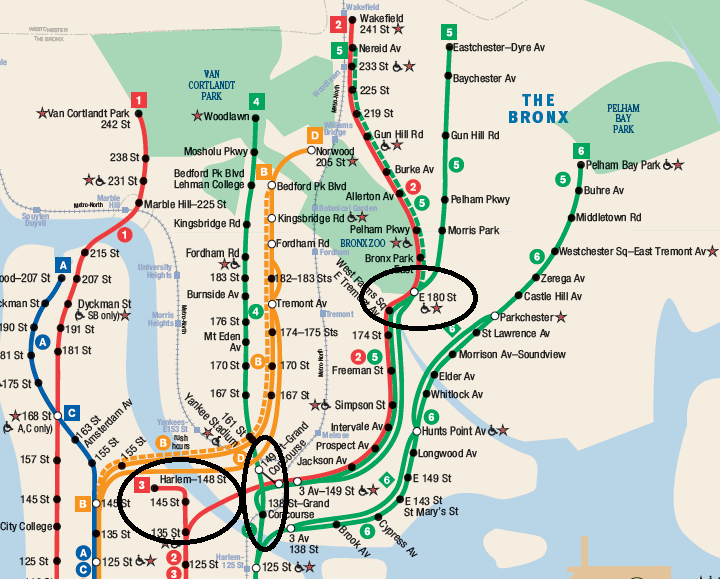
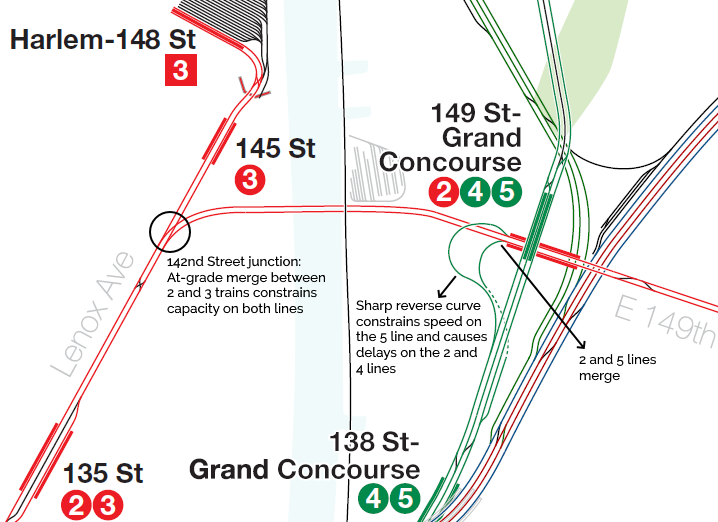
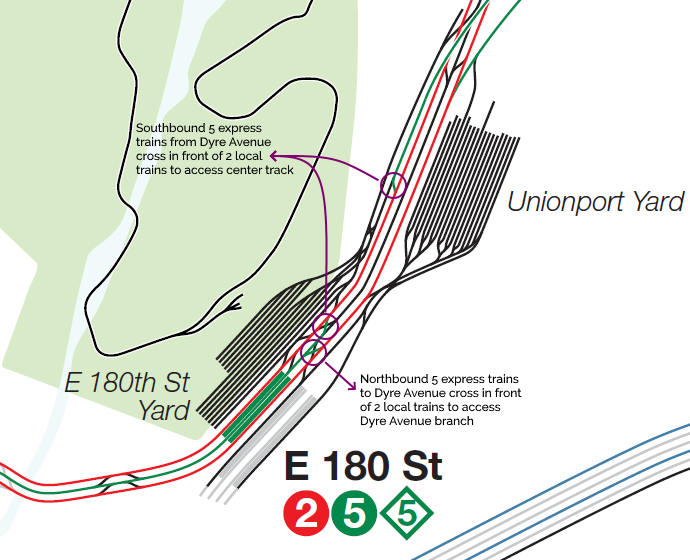
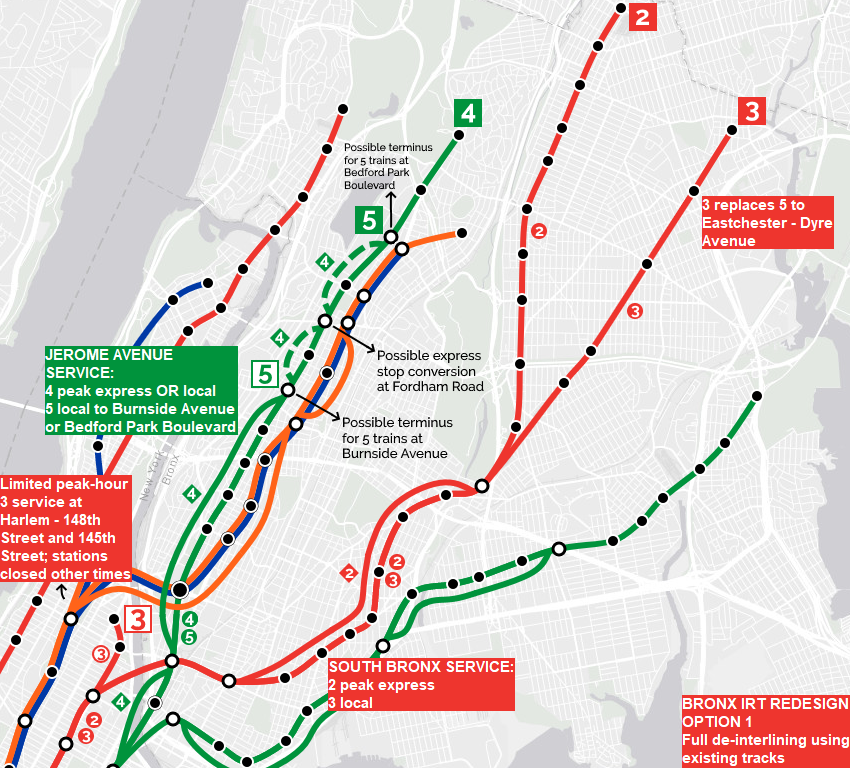
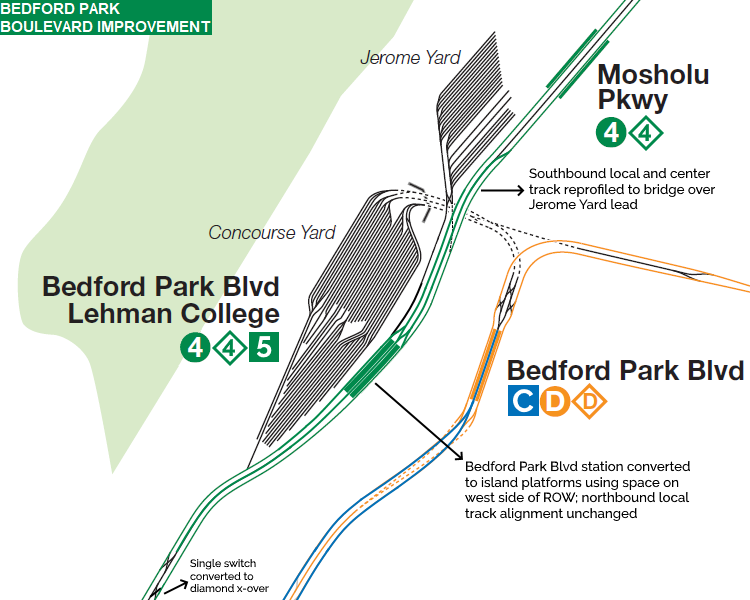
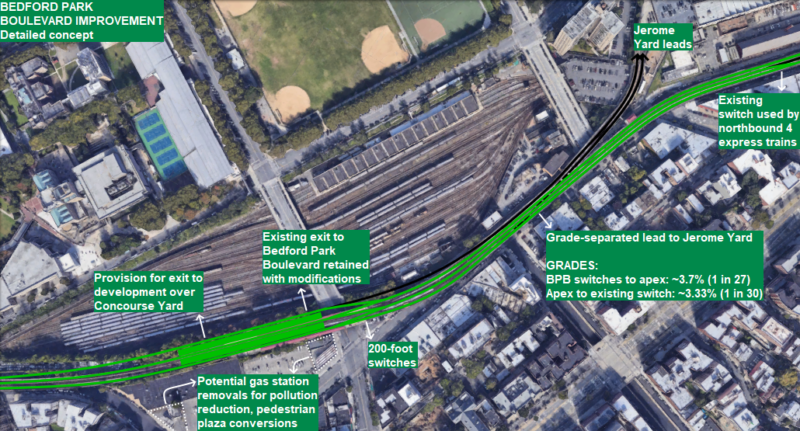
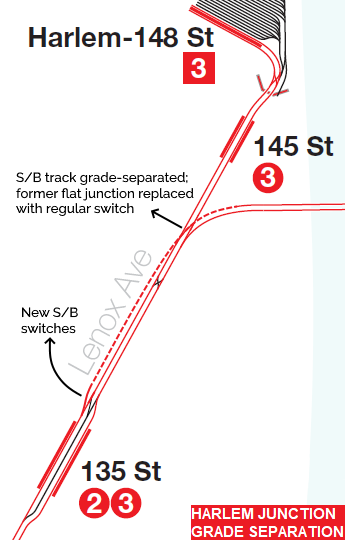
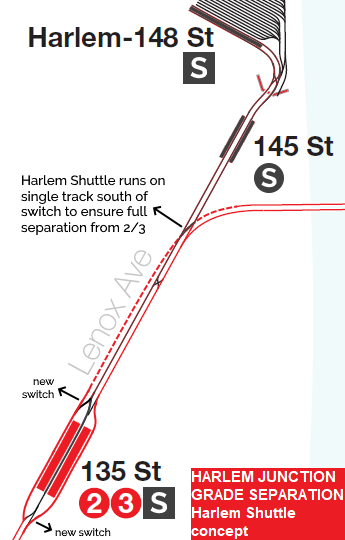
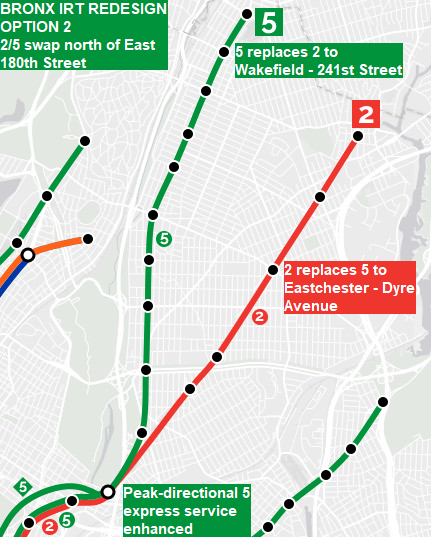
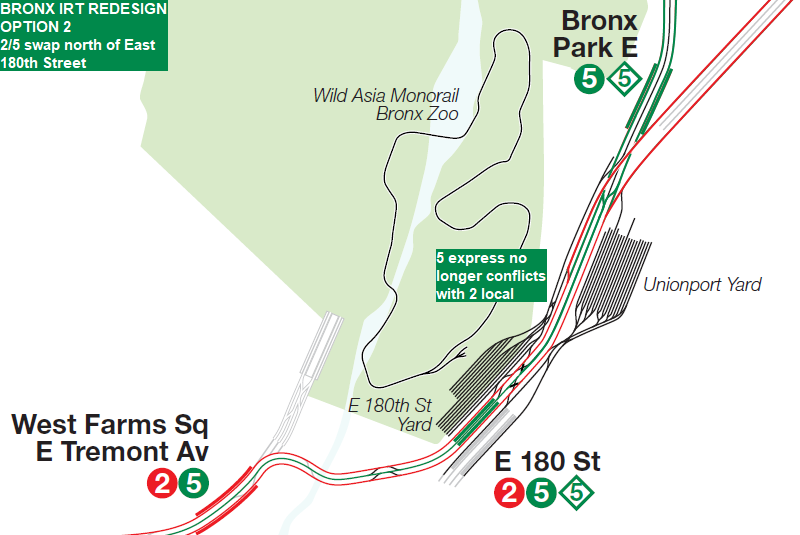
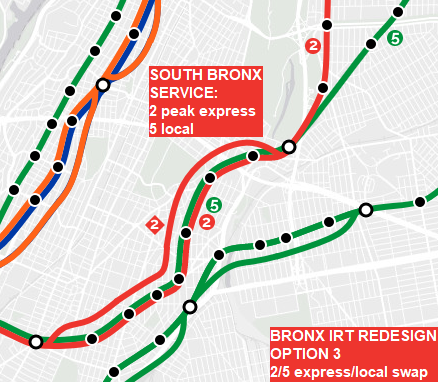
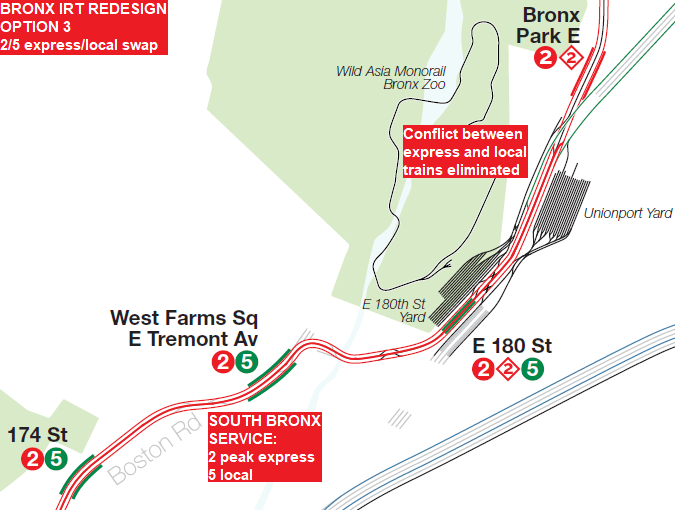
I disagree with the proposal for 161 St-Yankee Stadium. There’s a reason why it’s a local station, especially for the Concourse line. That’s why the B exists, the oh-not-so-great Yankee riders can take that train and leave the D express alone. It’s disrespectful for the MTA to force the D to stop there during rush hours, especially since it’s NEVER acknowledged as a disrespectful service change on their website (and never will be)
I can’t blame you for this sentiment. Back when I lived in The Bronx, I absolutely HATED it when the D express made the extra stop. Not only because switching from express to local and back to express killed the time savings, but because it was clear Yankees fans were getting preferential treatment over regular riders. This became even clearer when the D express did NOT make the extra stop at 161 when Jay-Z had his concert at Yankee Stadium several years ago.
While I think the other businesses in the area and the transfer to the 4 train make the case for a conversion, it is optional; leaving the station alone isn’t a deal-breaker.
Agree with your recommendation here for the 2/5 swap at E 180th. As there is only so much money that the MTA can spend, it is nice that there is at least a partial solution that doesn’t require capital expenditure. Realistically, other areas of the system are bigger trouble spots (like Rogers Jct from your last post) that probably need to be addressed sooner.
Agreed. Rogers Junction kills the 2/3/4/5 – all vital IRT express services in desperate need of relief!